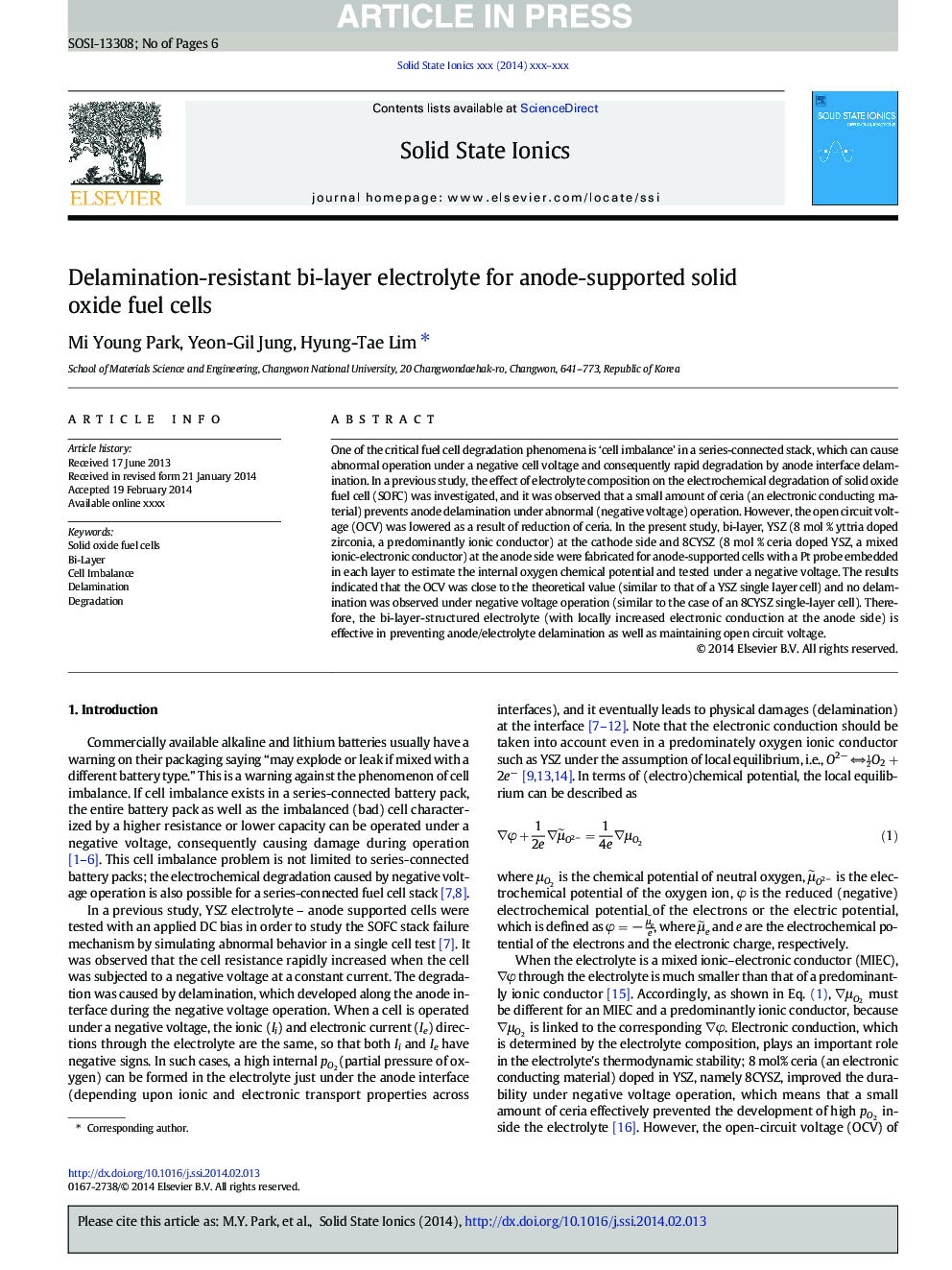| Article ID | Journal | Published Year | Pages | File Type |
|---|---|---|---|---|
| 7746424 | Solid State Ionics | 2014 | 6 Pages |
Abstract
One of the critical fuel cell degradation phenomena is 'cell imbalance' in a series-connected stack, which can cause abnormal operation under a negative cell voltage and consequently rapid degradation by anode interface delamination. In a previous study, the effect of electrolyte composition on the electrochemical degradation of solid oxide fuel cell (SOFC) was investigated, and it was observed that a small amount of ceria (an electronic conducting material) prevents anode delamination under abnormal (negative voltage) operation. However, the open circuit voltage (OCV) was lowered as a result of reduction of ceria. In the present study, bi-layer, YSZ (8Â mol % yttria doped zirconia, a predominantly ionic conductor) at the cathode side and 8CYSZ (8Â mol % ceria doped YSZ, a mixed ionic-electronic conductor) at the anode side were fabricated for anode-supported cells with a Pt probe embedded in each layer to estimate the internal oxygen chemical potential and tested under a negative voltage. The results indicated that the OCV was close to the theoretical value (similar to that of a YSZ single layer cell) and no delamination was observed under negative voltage operation (similar to the case of an 8CYSZ single-layer cell). Therefore, the bi-layer-structured electrolyte (with locally increased electronic conduction at the anode side) is effective in preventing anode/electrolyte delamination as well as maintaining open circuit voltage.
Related Topics
Physical Sciences and Engineering
Chemistry
Electrochemistry
Authors
Mi Young Park, Yeon-Gil Jung, Hyung-Tae Lim,
